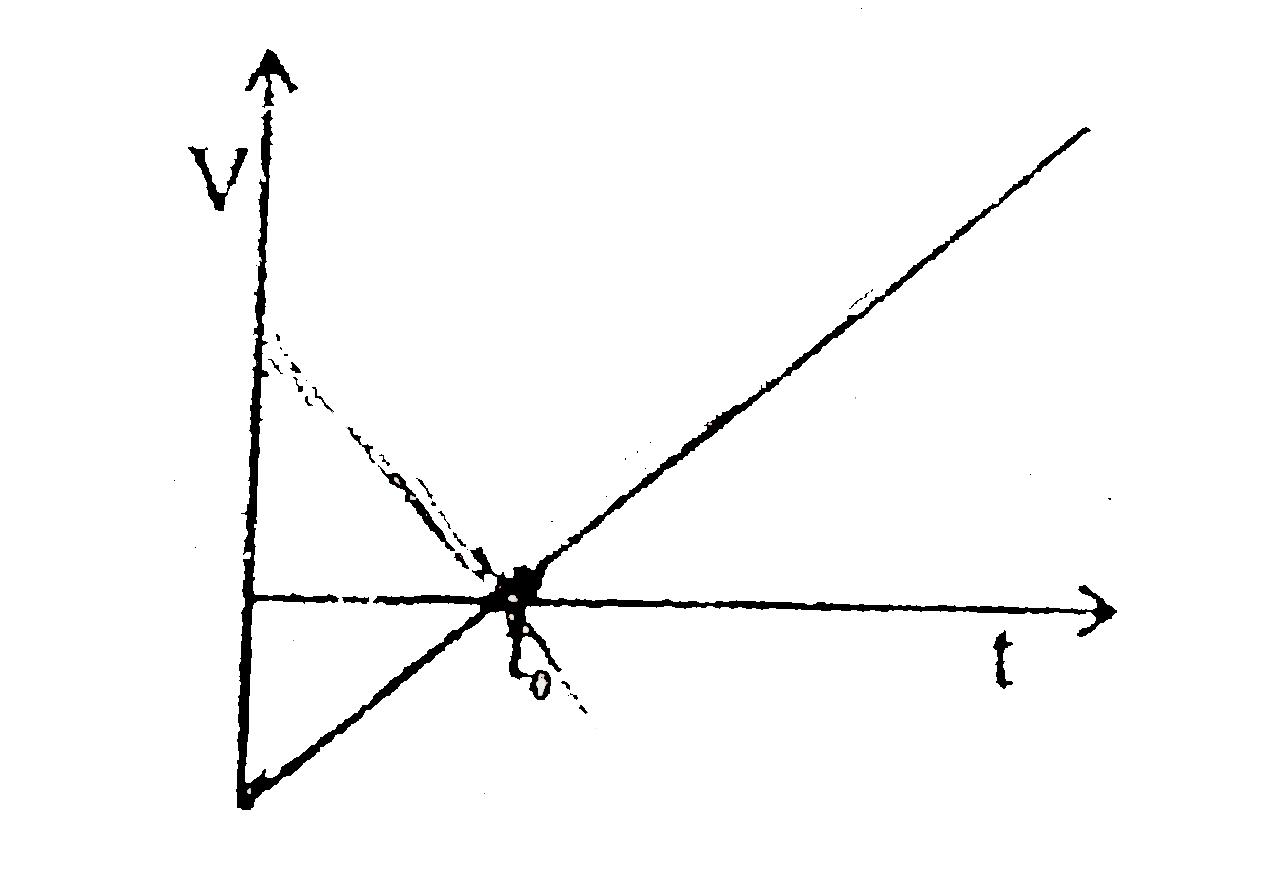Assertion:− A particle having zero acceleration must have constant speed.
Reason :− A Particle having constant speed must have zero acceleration.Solution in Gujrati
If both Assertion & Reason are True & the Reason is a correct explanation of the Assertion.
If both Assertion & Reason are True but Reason is not a correct explanation of the Assertiion.
If Assertion is True but the Reason is False.
If both Assertion & Reason are False
The correct Answer is:C
N/A
Topper's Solved these Questions
- TEST PAPERBOOK - ALLEN CHAPTER - TEST PAPEREXERCISE - Exercise (Physics)
330 Videos
- TEST PAPERBOOK - ALLEN CHAPTER - TEST PAPEREXERCISE - PHYSICS
4 Videos
- SIMPLE HARMONIC MOTIONBOOK - ALLEN CHAPTER - SIMPLE HARMONIC MOTIONEXERCISE - Example
1 Videos
- TEST PAPER 1BOOK - ALLEN CHAPTER - TEST PAPER 1EXERCISE - PHYSICS
11 Videos
Similar Questions
Figure shows velocity time graph of a particle moving in straight line. Which of the following statement(s) is / are CORRECT:−

View SolutionChoose the correct statement:
View SolutionA rod with rectangular cross section oscillates about a horizontal axis passing through one of its ends and it behaves like a seconds pendulum, its length will be
View SolutionWhy are electric field lines perpendicular at a point on an equipotential surface of a conductor ?
View SolutionAssertion: A body having non zero acceleration can have a constant velocity.
Reason: Acceleration is the rate of change of velocity.
View SolutionSTATEMENT-1: A particle in motion may not have variable speed but constant velocity.
STATEMENT-2: A particle having non-zero acceleration may move with constant speed.
View SolutionAssertion : An object may have varying speed without having varying velocity.
Reason : If the velocity is zero at an instant, the acceleration may not be zero at that instant.
View Solutionनीचे दिए गए कथनों को ध्यान से पढ़िए और कारण बताते हुए व उदाहरण देते हुए बताइए कि वे सत्य है या असत्य एकविमीय गति में किसी कण की
चाल स्थिर हो तो त्वरण अवश्य ही शून्य होना चाहिए ।
View SolutionWhich of the following must always be true ? I. If an object's acceleration is constant, then it must move in a striaght line. II. If an object's acceleration is zero, then its speed must remain constant. III. If an object's speed remains constant, then its acceleration must be zero.
View SolutionAssertion : A particle moves along circular path with constant speed then acceleration must be present.
Reason : A particle moves with variable velocity then acceleration must be present.
View SolutionThe speed of a particle is constant, Will It have acceleration? Justify with an example.
View SolutionRead each statement below carefully and state with reasons and examples, if it is true or false , A particle in one-dimensional motion (a) with zero speed at an instant may have non-zero acceleration at that instant (b) with zero speed may have non-zero velocity, (c) with constant speed must have zero acceleration, (d) with positive value of acceleration must be speeding up.
View SolutionRead each statement below carefully and state with reasons and examples, if it is true or false , A particle in one-dimensional motion (a) with zero speed at an instant may have non-zero acceleration at that instant (b) with zero speed may have non-zero velocity, (c) with constant speed must have zero acceleration, (d) with positive value of acceleration must be speeding up.
View SolutionRead each statement below carefully and state with reasons and examples, if it is true or false , A particle in one-dimensional motion (a) with zero speed at an instant may have non-zero acceleration at that instant (b) with zero speed may have non-zero velocity, (c) with constant speed must have zero acceleration, (d) with positive value of acceleration must be speeding up.
View SolutionRead each statement below carefully and state with reasons and examples, if it is true or false ,
A particle in one-dimensional motion
(a) with zero speed at an instant may have non-zero acceleration at that instant
(b) with zero speed may have non-zero velocity,
(c) with constant speed must have zero acceleration,
(d) with positive value of acceleration must be speeding up.
View SolutionRead each statement below carefully and state with reasons and examples, if it is true or false, A particle in one-dimensional motion (a) with zero speed at an instant may have non-zero acceleration at that instant (b) with zero speed may have non-zero velocity (c) with constant speed must have zero acceleration, (d) with positive value of acceleration must be speeding up.
View Solution
